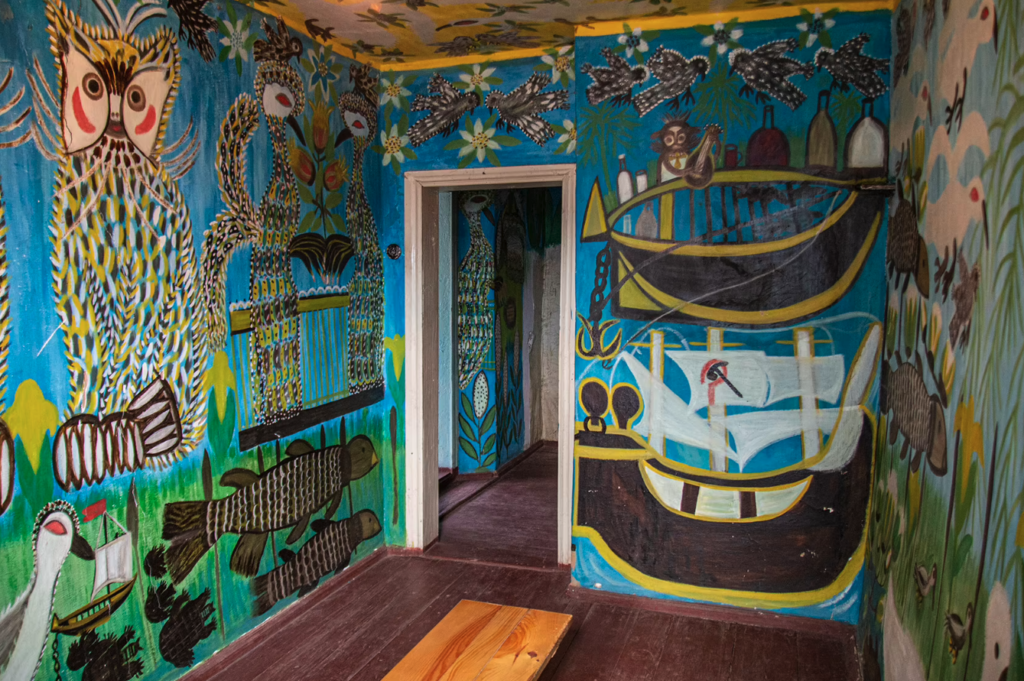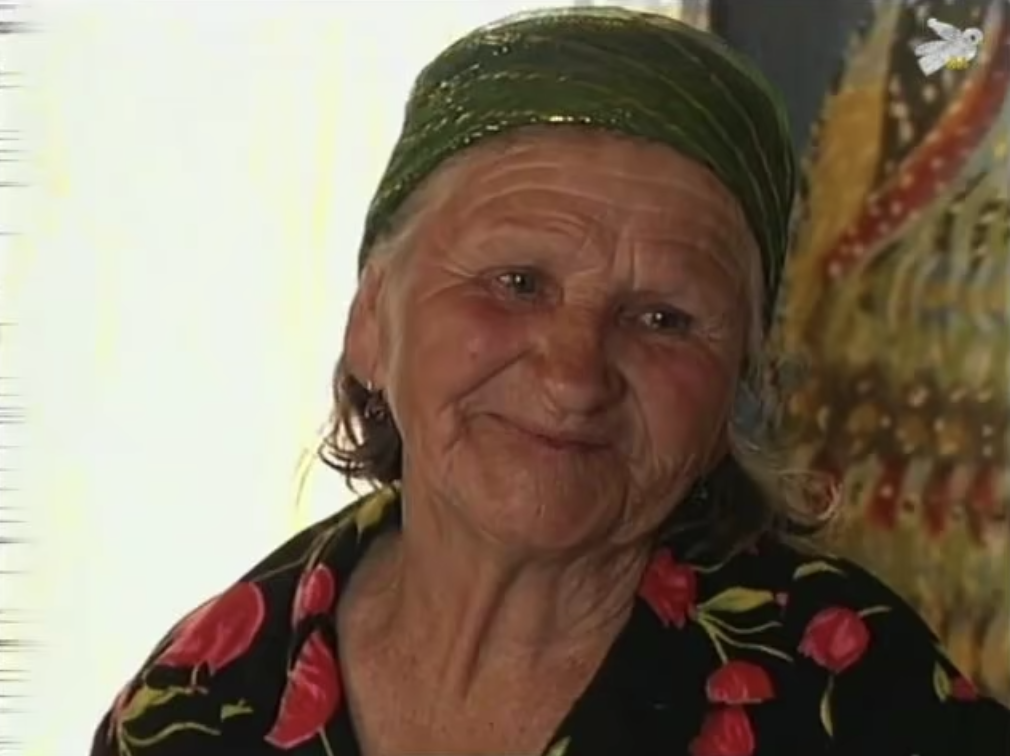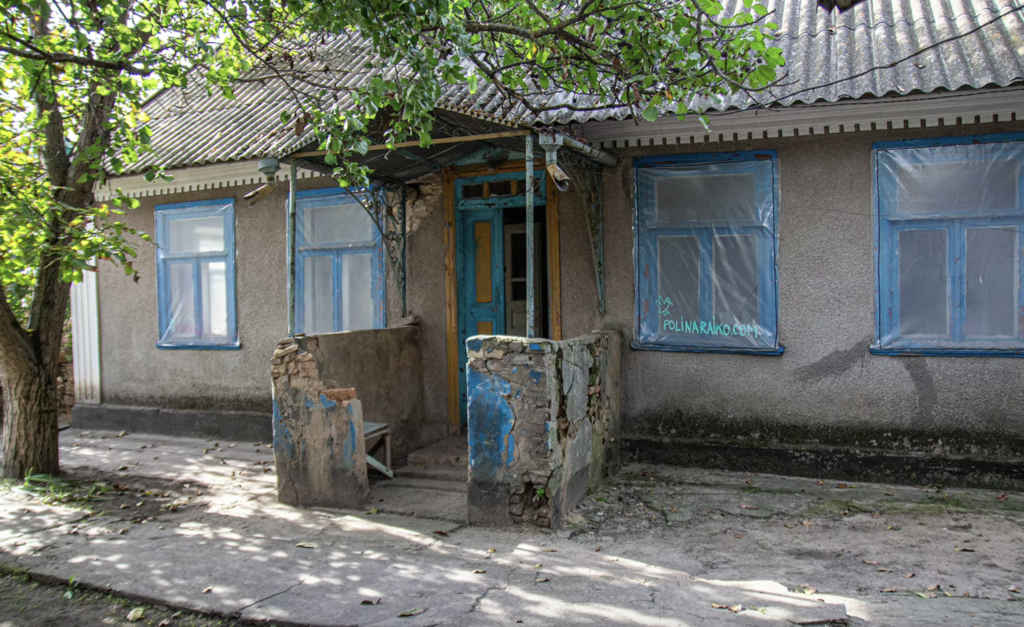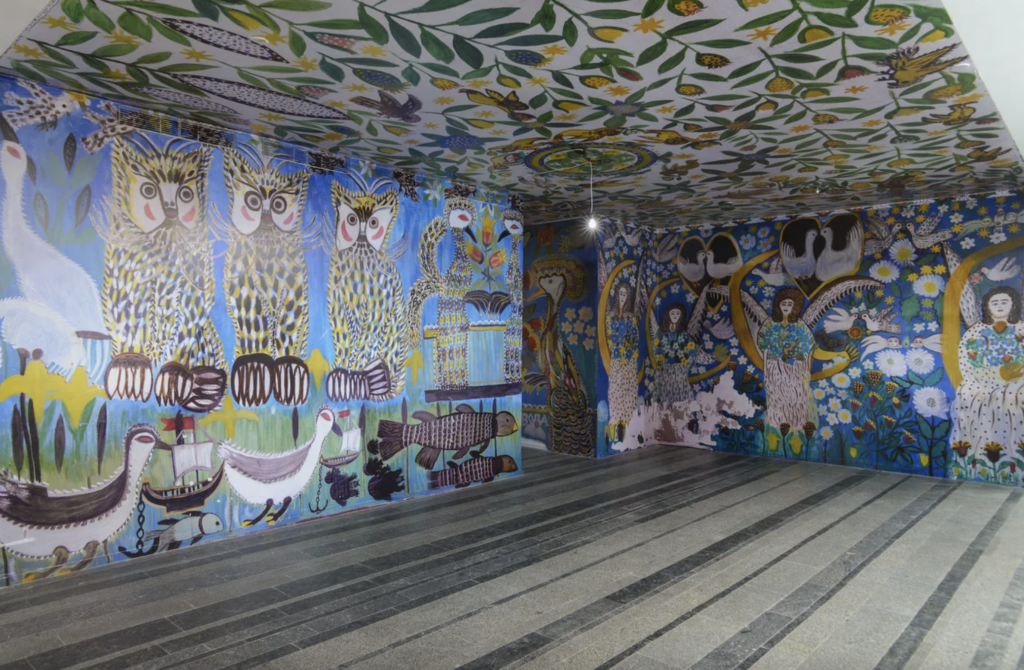Camille Claudel in 5 Sculptures
Camille Claudel was an outstanding 19th-century sculptress, a pupil and assistant to Auguste Rodin, and an artist suffering from mental problems. She...
Valeria Kumekina 24 July 2024
20 March 2024 min Read
In 1998, for the first time ever, Polina Raiko (1928-2004), a 69-year-old woman who had spent almost her entire life as a wife, mother, and farmer, picked up a paintbrush and began painting the inside of her home. Years after her death, her house became a folk art masterpiece and a source of strength and inspiration for Ukrainians being invaded by a country trying to erase its culture. Polina Raiko’s artwork today may be lost, but her story will, and must, continue to live on.
Only a few years later, in Southern Ukraine, you could walk around the Kherson region, ships coming in and out of the port city, rolling hills and farms, and see some lovely, friendly, hard-working locals. At some point, whether it was the whispers throughout the town or a gut feeling, you would wander around to a six-bedroom house with what appears to be a grandmother sitting down next to a fence with a painted dove. It’s hot, she’s not wearing any shoes, and as this eccentric woman invites you into her home, sitting nestled between two rivers with a giant walnut tree and grape bush out front, you can’t believe what you are about to see.

The inside of Polina Raiko’s house museum in Oleshky, Ukraine. Photo via Ukrainska Pravda.
I’ve never seen Francisco de Goya’s Black Paintings, currently housed in the Prado Museum in Madrid, Spain, but I often wonder what it would have been like to walk into Quinta del Sordo and discover these intensely dark, intense, and haunting works of art painted directly on the walls of this villa. Would I be amazed? Would I be disturbed? Would I ever sleep again?
While the great Ukrainian folk artist Polina Raiko’s work may not seem as intense and dark as Goya’s Black Paintings, there is a lot of pain in Raiko’s work. Nevertheless, you’d be met with more beautiful blues, greens, and yellows as expected to see in the Ukrainian countryside.

Photograph of Polina Raiko. Facebook.
Born in 1928 in Ukraine, Polina Raiko lived a rather underwhelming life until the 1990s. Deported to Germany during World War II, she returned to Ukraine and married at 22. She would make a living with her husband and two children by growing and selling fruits and vegetables. She lived in poverty most of her life and would travel roughly two kilometers, sometimes without shoes, to retrieve firewood and stay warm through the harsh winters. Not known as an artist, her teacher asked her to draw a ship in the second grade. She grabbed some chalk, “and drew a sea ship. And there is smoke coming from a pipe, and a sail, and masts, and anchors. And a sickle and a hammer, and the flag.” The teacher yelled, “Sit down, Polina!”1
On the other hand, Francisco de Goya is one of the most famous painters of all time. After years of running the Royal Academy, being a royal court painter, and seeing much success as an artist in his seventies, he moved just outside of Madrid where, for the next few years, he would paint nearly every inch of his home with some of the most incredible works of art that somehow managed to survive til this day. There is no knowing what these works meant; Goya left no record and did not mention them, and it is assumed that they were never meant for public view. But after the life he had lived, years of war, pain, and sickness, perhaps this was part of Goya’s grieving process or an escape from the harsh reality of life.
Polina Raiko also needed an escape. She wasn’t an artist, had little money, and was suddenly left without a family. In 1994, her daughter died in a car crash, her husband died a year later, and her son, who had struggled with alcohol addiction his whole life, allegedly stabbing Polina once and threatening her life on numerous occasions, now found himself in prison. Whether she needed an escape, to find some joy somewhere, or just simply find a way to continue on, Raiko found what she needed when a neighbor suggested she paint. Like my young children, who decide against using a canvas when the walls of their home stare at them, empty and ready to transform, Polina Raiko took to her walls and began her masterpiece.
What started with different shapes, simple colors, and different types of birds, ducks, geese, cockerels, and her distinctive owls (which I always recall thinking of the Ukrainian folk artist), eventually developed into a biography of her life, reproducing events and people that filled those moments of happiness, including her children, her sisters, and her husband the fisherman.2 Often working late into the night, she would hide behind the window curtains, hoping the rumors of an eccentric woman painting her walls would eventually subside. Raiko turned her home into one of the world’s most renowned folk art environments, adding another feather to the cap of self-taught artists everywhere.
Unlike Goya, who some may argue had seen enough and astutely decided that life is unfair, marking the Black Paintings as the last hurrah for one of the all-time greats, Polina Raiko wasn’t ready to give up. She still could and needed to find joy, bringing meaning to an unfair life that dealt her tragedy after tragedy. As one might do towards the end of one’s life, she searched for new meaning. While Raiko’s artwork continued to expand throughout the entire house, with beautiful blues, yellows, and bright greens now adorning the frame of the home, complemented by touches of red and purple on the doors and ceilings, so did Raiko’s notoriety grow in her community and the art world.
Into her seventies, painting, which eluded her for almost her entire life, became her passion. Having worked as a farmer throughout her life, she was now earning small sums by painting other people’s homes. A surviving home video from the early 2000s captures Raiko enthusiastically giving tours and speeches throughout her home to locals and anyone who would listen. In 2003, a brochure was commissioned to showcase her life and work to those in Kherson. Unfortunately, before it could be published, Polina Raiko passed away in her beautifully decorated home on January 15, 2004.
After her passing, her home remained empty, resembling a vast museum in the quiet of the night. Yet, unlike a traditional museum bustling with morning visitors appreciating the artwork, her home lacked the curious onlookers. Even her surviving family showed little interest in her creations. According to historian Serhii Dyachenko, a fan of Raiko’s talent, her surviving grandchildren considered her eccentric and distanced themselves, fearing her “abnormality” might be inherited.3 In haste, Raiko’s grandson sold the house to a Canadian couple living in Ukraine.

Polina Raiko’s house museum in Oleshky, Ukraine. Photo via Ukrainska Pravda.
After the sale of the home in the late 2000s, the goal of the community for the home was preservation. In 2016, plans to create a museum out of the home were put into place, and the Ivan Honchar Museum in Kyiv, Ukraine, a museum showcasing and preserving Ukrainian folk art, stepped in, intending to keep this mural-filled home open to the public.
In 2018, reproductions of the murals in Polina Raiko’s home were a part of “A Space of One’s Own,” an exhibition at the Pinchuk Art Centre in Kyiv that aims to show “perspective on the history of Ukrainian art and the place of women in it by emphasizing the preeminent art phenomena and taking into account the complex specificity of the Ukrainian sociopolitical context.”4 Polina Raiko was one of the many artists who presented the exhibition showing some of her murals by means of life-sized photo montages. Quite a run of well-deserved luck for someone who only picked up the cheapest enamel paint and paintbrush she could find twenty years earlier.

The inside of Polina Raiko’s house museum in Oleshky, Ukraine. Photo via Ukrainska Pravda.
Polina Raiko, a poor woman stricken by tragedy, may now be remembered in the same likes of Maud Lewis from Canada, Sonabai Rajawar of India, or the American self-taught artist Clementine Hunter who would paint on whatever they could find, transforming their homes and into mural-filled masterpieces as a way to escape, provide therapy to their soul, and remember the good times in the hopes to bring joy or put a smile on their or someone else’s face.
Due to the ongoing invasion of Russian forces into Ukraine, Polina Raiko’s home was once again struck by tragedy in what was reported as a deliberate attack on the Kakhovka Hydroelectric Power Plant in Kherson after Russian forces blew it up on the morning of June 6, 2023.5 Polina Raiko’s home once sat nestled between two rivers, with a giant walnut tree and grape bush out front had been completely flooded, with what remains today still a bit of a mystery. As reported by Semen Khramstov, the garden, painted fences, and nearly the entire interior of Raiko’s home were lost.
“Most likely, we will lose it,” said Oksana Semenik, an art historian and journalist who runs the Ukrainian Art History account on Twitter. “Her main and the only artwork was this house. We have lost her heritage and her physical presence.”
Polina Raiko’s artistic legacy might seem on the brink of disappearance. Whether it was a deliberate act during the Russian invasion, potentially a cultural genocide, reminiscent of another Ukrainian folk artist, Maria Prymachenko, whose work was salvaged from a burning building a year prior, there is one element that remains untouchable—the inspiring and joyful tale of a 69-year-old woman transforming pain into exquisite art. Despite facing adversity as a poor farmer marked by tragedy, Raiko found new life through the enduring photographs, stories, and articles that will persist. From using pension funds for her initial art supplies to becoming synonymous with Ukraine’s most celebrated folk artist, a woman who once left Pablo Picasso in awe—Maria Prymachenko—Polina Raiko persisted. Her unyielding pursuit of joy amid adversity ensures that her story and art will always bring smiles to the faces of art enthusiasts everywhere.
Yevhen Rudenko, Eldar Sarakhman, “A divine tragedy, or How a simple grandmother Polina from Oleshok became a star of naive art”, Ukrainska Pravda, October 2020
Emma Graham-Harrison, “‘Masterpiece’ house is latest victim of Putin’s war on Ukrainian heritage,” The Guardian, June 2023
Sophia Kishkovsky, “Devastating dam collapse in Ukraine has apparently flooded house museum of late artist Polina Rayko”, The Art Newspaper, June 2023
DailyArt Magazine needs your support. Every contribution, however big or small, is very valuable for our future. Thanks to it, we will be able to sustain and grow the Magazine. Thank you for your help!